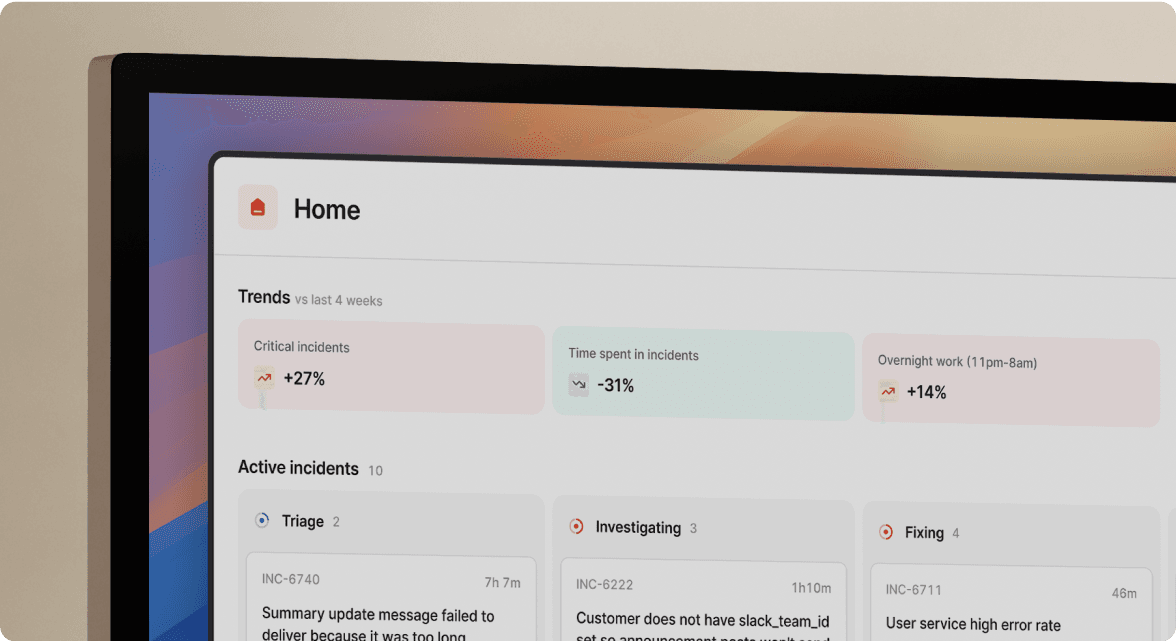
Engineering
Bloom filters: the niche trick behind a 16× faster API
 Mike Fisher
Mike FisherNovember 14, 2025

Engineering
My first three months at incident.io
 Edd Sowden
Edd SowdenSeptember 1, 2025

Engineering
Impact review: Scribe under the microscope
 Kelsey Mills
Kelsey MillsAugust 20, 2025

Engineering
Ready, steady, goa: our API setup
 Shlok Shah
Shlok ShahAugust 11, 2025

Engineering
Breaking through the Senior Engineer ceiling
 Norberto Lopes
Norberto LopesAugust 5, 2025

Engineering
Why I decided to join incident.io and my impressions so far
 James Jarvis
James JarvisJuly 31, 2025

Engineering
The quest for the five minute deploy
 Matthew Barrington
Matthew Barrington July 22, 2025

Engineering
Being on-call at incident.io
 Alicia Collymore
Alicia CollymoreJuly 18, 2025

Engineering
How we're shipping faster with Claude Code and Git Worktrees
 Rory Bain
Rory BainJune 27, 2025
Stay in the loop: subscribe to our RSS feed.
So good, you’ll break things on purpose
Ready for modern incident management? Book a call with one of our experts today.

We’d love to talk to you about
- All-in-one incident management
- Our unmatched speed of deployment
- Why we’re loved by users and easily adopted
- How we work for the whole organization




